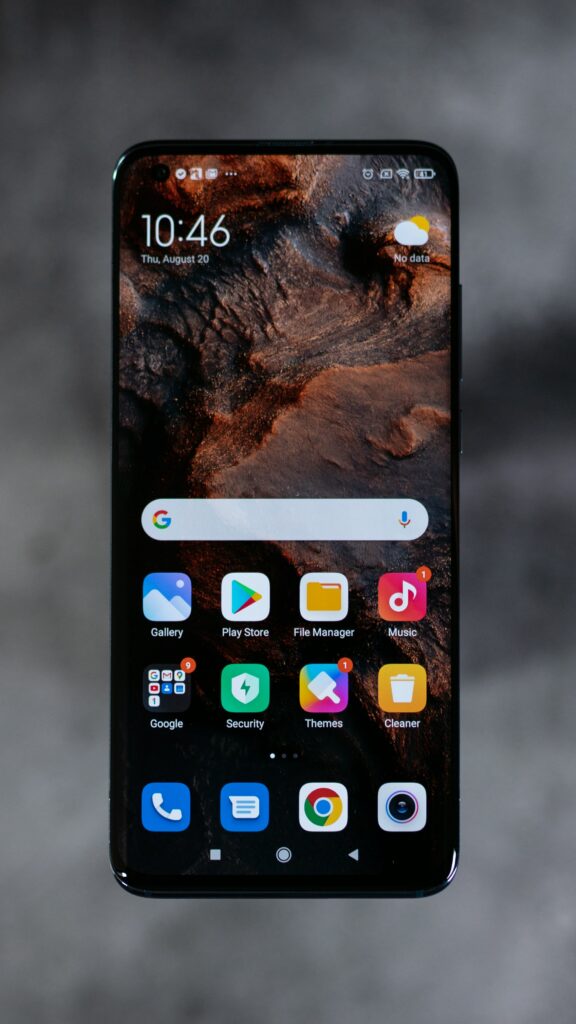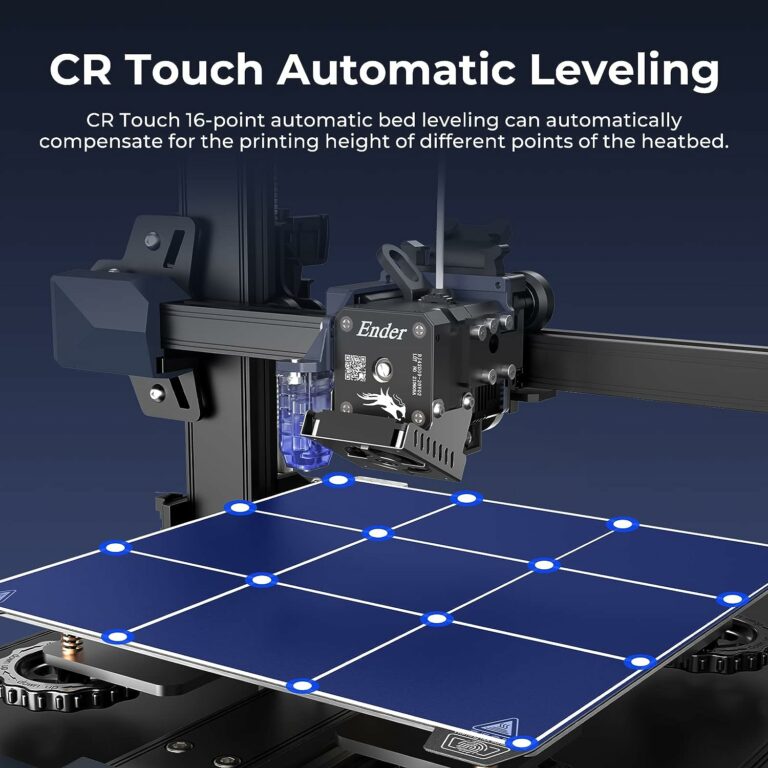In the ever-advancing world of technology, it’s hard to keep up with the constant changes and improvements in our beloved smartphones. However, fear not, as “Smartphone Evolution: What to Expect in Next-Gen Mobile Tech” is here to provide you with a glimpse into the exciting future of mobile technology. From cutting-edge advancements in artificial intelligence and augmented reality to mind-boggling improvements in camera capabilities and battery life, this article will take you on a journey through the next generation of smartphones and leave you in awe of what’s to come. Get ready to be dazzled by the possibilities that await in the world of next-gen mobile tech!

Foldable Phones
Advancements in Foldable Display Technology
Foldable phones have emerged as one of the most exciting innovations in mobile technology in recent years. The advancements in foldable display technology have revolutionized the way we perceive and use smartphones. These devices offer the unique ability to transform from a compact smartphone to a larger tablet-like display, providing users with a versatile and immersive experience.
One of the key advancements in foldable display technology is the development of flexible OLED screens. These screens are made of thin layers of organic materials that can bend and fold without compromising the display quality. This flexibility allows for the creation of innovative folding designs that can be unfolded to provide a larger screen estate when needed, and easily folded back to a more compact size for portability.
Another important aspect of foldable display technology is the durability and longevity of these devices. Manufacturers have invested heavily in materials and engineering techniques to ensure that foldable phones can withstand the rigors of daily use. Special attention has been paid to the hinge mechanism, which is crucial in maintaining the integrity of the foldable design. With advancements in hinge technology, foldable phones can now endure repeated folding and unfolding without the risk of damage.
Improved Durability and Longevity
Foldable phones have come a long way in terms of durability and longevity. Manufacturers have implemented various measures to address the issues that were initially associated with this new form factor. The introduction of ultra-thin glass and advanced polymer materials has significantly improved the durability of foldable displays. These materials are not only resilient but also provide enhanced protection against scratches and impacts.
Moreover, the implementation of reinforced frames and improved sealing techniques has made foldable phones more resistant to dust, water, and other external elements. This means that users can confidently take their devices with them on outdoor adventures or in challenging environments without worrying about any potential damage.
Enhanced Multitasking and User Experience
Foldable phones offer enhanced multitasking capabilities that take productivity to a whole new level. With the ability to have multiple apps open simultaneously on a larger screen, users can seamlessly switch between tasks and easily view and interact with content side by side. This allows for a more efficient and streamlined workflow, whether it’s for work or personal use.
Additionally, the larger screen real estate of foldable phones enhances the overall user experience. Users can enjoy immersive gaming, immersive video viewing, and enhanced web browsing on a larger canvas. The larger displays also make it easier to read and edit documents, view photos and videos, and engage in video conferencing with greater clarity and precision.
With foldable phones, the possibilities are endless. Whether you’re a professional seeking a portable workstation or a creative individual looking to explore new ways of expressing yourself, foldable phones offer a transformative experience that combines the best aspects of smartphones and tablets.
5G Integration
Superfast Connectivity and Download Speeds
The integration of 5G technology in smartphones is a game-changer in terms of connectivity and download speeds. 5G networks offer blazing-fast internet speeds that surpass the capabilities of their predecessors. With 5G, you can experience ultra-fast download and upload speeds, enabling you to download large files, stream high-quality videos, and engage in seamless online gaming without any lag or buffering.
These superfast connectivity speeds are particularly beneficial for businesses and professionals who rely on cloud-based services, video conferencing, and real-time collaboration. With 5G-enabled smartphones, you can expect a significant improvement in productivity and efficiency, as you can access and share data with lightning speed.
Low Latency and Improved Network Performance
One of the key advantages of 5G technology is its low latency, which refers to the time it takes for data to travel between your device and the network. With 5G, latency is significantly reduced, resulting in near-instantaneous response times. This is especially important for applications that require real-time interaction, such as online gaming, virtual reality, and augmented reality.
In addition to low latency, 5G also promises improved network performance, even in crowded areas with a high concentration of users. With its enhanced capacity and bandwidth, 5G networks can handle a large number of connected devices simultaneously without experiencing network congestion or slowdowns. This ensures a seamless and uninterrupted user experience, regardless of the demand on the network.
Expanded IoT Capabilities
5G integration in smartphones is not only beneficial for personal use but also opens up a world of possibilities in the realm of the Internet of Things (IoT). With 5G connectivity, smartphones can seamlessly connect and communicate with a wide range of IoT devices, including smart home appliances, wearables, connected cars, and industrial machinery.
The expanded IoT capabilities enabled by 5G technology offer greater convenience, efficiency, and automation. Imagine being able to control your home’s lighting, temperature, and security systems from your smartphone, or monitoring and managing your health and fitness devices in real-time. With 5G, the concept of a fully interconnected and smart ecosystem becomes a tangible reality.
Biometric Authentication
Ultrasonic Fingerprint Scanners
Biometric authentication has become a standard feature in modern smartphones, and ultrasonic fingerprint scanners represent the latest evolution in this technology. Unlike traditional capacitive fingerprint scanners, which rely on electrical conductivity, ultrasonic scanners use ultrasonic sound waves to capture a detailed 3D image of the fingerprint.
The advantage of ultrasonic fingerprint scanners is their ability to accurately read fingerprints in various conditions, including wet or dirty fingers. This makes them more reliable and convenient for everyday use. Additionally, the 3D image capture enhances security by making it harder for impostors to fake fingerprints or bypass the authentication process.
Facial Recognition Technology
Facial recognition technology has gained widespread adoption in smartphones due to its convenience and security features. By analyzing and mapping various facial features, such as the distance between the eyes and the shape of the face, facial recognition technology can accurately identify the user and unlock the device.
One of the key advantages of facial recognition is its speed and ease of use. With just a glance, you can unlock your smartphone and access your apps and data. Facial recognition technology has also evolved to adapt to different lighting conditions, angles, and facial expressions, making it highly reliable and user-friendly.
Iris Scanners and Retina Recognition
Iris scanners and retina recognition take biometric authentication to the next level by analyzing the unique patterns and characteristics of the iris or retina. These methods offer a high level of security, as the intricate details of the eye are extremely difficult to replicate or forge.
Iris scanners and retina recognition systems use infrared light to capture detailed images of the iris or retina, ensuring accurate and fast authentication. This biometric technology is not only secure but also user-friendly, as it eliminates the need for physical contact, such as placing a finger on a scanner.
In-Display Cameras
Elimination of Bezels and Notches
In-display cameras represent a significant step forward in smartphone design, as they eliminate the need for a separate camera module or intrusive notches on the display. These cameras are seamlessly integrated beneath the screen, allowing for a truly bezel-less and unobstructed viewing experience.
The elimination of bezels and notches not only enhances the aesthetics of smartphones but also maximizes the screen-to-body ratio. This means that you can enjoy a larger display area without sacrificing the functionality of the front-facing camera.
Improved Selfie Cameras
With in-display cameras, smartphone manufacturers can now focus on improving the quality and performance of front-facing cameras. The technology used in these cameras has advanced significantly, allowing for higher resolution, better low-light performance, and improved image processing capabilities.
Selfie enthusiasts can now capture stunning self-portraits with enhanced details, vibrant colors, and natural skin tones. The combination of high-quality in-display cameras and advanced software algorithms ensures that every selfie is Instagram-worthy with minimal effort.
Enhanced Display Quality
In-display cameras not only improve the camera capabilities of smartphones but also enhance the overall display quality. Without the need for notches or other obstructions, the display can offer a more immersive and uninterrupted viewing experience.
Manufacturers are now able to use the latest display technologies, such as OLED or AMOLED, in conjunction with in-display cameras. These technologies provide vibrant colors, deep blacks, and high contrast ratios, resulting in a visually stunning display.

Augmented Reality (AR)
Integration of AR into Everyday Functions
Augmented reality (AR) is rapidly becoming a part of our everyday lives, thanks to advancements in smartphone technology. By combining the real world with virtual elements, AR enhances our perception and interaction with the environment.
Smartphones equipped with AR capabilities can overlay digital information, such as directions, product details, or interactive virtual objects, onto the real-world view captured by the camera. This opens up a wide range of possibilities in areas such as education, entertainment, shopping, and navigation.
Enhanced Gaming and Entertainment Experiences
AR has revolutionized the gaming and entertainment industry, offering immersive experiences that blur the line between the real world and the virtual world. With AR-enabled smartphones, gamers can transform their surroundings into interactive game environments and engage in multiplayer experiences in real-time.
Beyond gaming, AR also enhances entertainment experiences by bringing characters or objects from movies, TV shows, or books to life. Users can enjoy interactive storytelling or create their own augmented reality content to share with others.
AR-based Navigation and Information Display
AR-based navigation and information display is another exciting application of this technology. Instead of relying on traditional maps and directions, AR allows users to visualize their route through digital overlays in the real world. Whether it’s finding the nearest restaurant, locating points of interest, or navigating complex environments, AR-based navigation provides a more intuitive and immersive experience.
AR can also be used to provide real-time information about objects or places. For example, by pointing the camera at a museum exhibit or a historical landmark, users can access relevant information, multimedia content, or interactive guides, enhancing their understanding and engagement with the surroundings.
Artificial Intelligence (AI)
Improved Voice Assistants and Virtual Assistants
Artificial intelligence has become an integral part of smartphones, powering voice assistants and virtual assistants that can understand and respond to natural language commands. With AI, voice assistants like Siri, Google Assistant, or Alexa have become more intelligent and capable of performing a wide range of tasks.
AI-powered voice assistants can provide information, assist in setting reminders and alarms, perform internet searches, control smart home devices, and even engage in casual conversation. The continuous improvement of AI algorithms and machine learning techniques allows these assistants to understand context, adapt to user preferences, and provide personalized recommendations and suggestions.
AI-powered Smart Cameras
AI is also revolutionizing smartphone cameras, enabling advanced features and capabilities that enhance photography and videography. AI algorithms analyze the scene, detect objects or faces, identify optimal settings, and apply real-time enhancements to create stunning images.
Smart cameras powered by AI can automatically adjust exposure, white balance, and focus to capture the perfect shot in any lighting condition. They can also recognize and track subjects, allowing for better portrait photography or action shots. Additionally, AI algorithms can remove noise, enhance details, and improve dynamic range, ensuring that every photo or video is of the highest quality.
Customized User Experiences
One of the key benefits of AI in smartphones is its ability to create customized user experiences. By continuously analyzing user behavior, preferences, and patterns, AI algorithms can tailor the smartphone’s interface, settings, and features to individual needs and preferences.
For example, AI can learn your daily routines and automatically adjust settings, such as brightness, volume, or notifications, based on your habits. It can also suggest apps, content, or services that are relevant to your interests and preferences, making your smartphone truly personalized and intuitive.

Extended Battery Life
Advancements in Battery Technology
Battery life has always been a concern for smartphone users, but advancements in battery technology are addressing this issue. Manufacturers are investing in research and development to improve the energy density and efficiency of smartphone batteries, allowing for longer usage time without compromising device performance.
Innovations such as solid-state batteries, graphene-based batteries, or improved lithium-ion technologies are paving the way for smartphones with extended battery life. These advancements ensure that you can use your smartphone throughout the day without constantly worrying about running out of power.
Optimization of App Power Consumption
In addition to advancements in battery technology, smartphone manufacturers are also focusing on optimizing app power consumption. With the help of AI algorithms and machine learning, smartphones can analyze the power usage of different apps and make intelligent decisions to minimize battery drain.
Through techniques such as app standby, background app limitations, or adaptive power management, smartphones can prioritize power usage and ensure that essential apps and services receive the necessary resources while minimizing the power consumption of less critical processes. This optimization allows for longer battery life without sacrificing functionality or performance.
Wireless Charging Innovations
Wireless charging has become a standard feature in many smartphones, enabling convenient and hassle-free charging experiences. With wireless charging, you can simply place your smartphone on a compatible charging pad or stand, eliminating the need for cables and connectors.
Manufacturers are constantly improving wireless charging technologies to enhance efficiency and speed. Faster wireless charging standards, such as Qi 2.0 or 3.0, provide quicker charging times, so you can refuel your smartphone in a shorter amount of time. Additionally, innovations in wireless charging pads and stands allow for more precise alignment, ensuring optimal charging efficiency.
Enhanced Camera Technology
Higher Megapixel Count and Improved Optical Zoom
Camera technology in smartphones has come a long way, with higher megapixel counts and improved optical zoom capabilities that rival dedicated digital cameras. Manufacturers are continually pushing the boundaries of sensor technology, allowing for sharper, more detailed, and vibrant images.
The increase in megapixel count enables smartphones to capture more information in every shot, resulting in better dynamic range, improved low-light performance, and enhanced clarity. Additionally, improved optical zoom capabilities allow for closer and more detailed shots without sacrificing image quality.
Advanced Image Stabilization
Shaky hands or movements can often result in blurry photos or shaky videos, but advanced image stabilization technology in smartphones addresses this issue. Optical image stabilization (OIS) or electronic image stabilization (EIS) techniques reduce camera shake, resulting in sharper and more stable images and videos.
Whether you’re capturing a fast-moving subject, recording a video while walking, or taking photos in low-light conditions, advanced image stabilization algorithms ensure that your shots are clear, crisp, and free of motion blur.
Night Mode and Low Light Photography
Capturing photos in low-light conditions has always been a challenge for smartphone cameras, but advancements in camera technology have led to the introduction of night mode and dedicated low-light photography features. These features employ sophisticated algorithms and image processing techniques to enhance the brightness, reduce noise, and improve details in low-light situations.
Night mode takes multiple exposures and combines them to create a well-exposed image with balanced highlights and shadows. This allows you to capture stunning photos even in extremely low-light conditions, showcasing the finer details and preserving natural colors.
Advanced Processor and GPU
Faster and More Efficient Performance
The processor and GPU (graphics processing unit) are crucial components of a smartphone, determining its speed, efficiency, and overall performance. With each generation, smartphone processors become faster, more efficient, and capable of handling demanding tasks and applications.
Advanced processors, such as Qualcomm Snapdragon or Apple A-series chips, employ cutting-edge architectures, higher clock speeds, and more efficient power management techniques. This ensures that your smartphone can handle multitasking, gaming, or resource-intensive apps with ease, providing a responsive and smooth user experience.
Seamless Gaming and Graphics Rendering
For mobile gamers, advanced processors and GPUs provide the necessary power for seamless gaming experiences. These components allow for smooth frame rates, realistic graphics, and immersive gameplay, even in graphically demanding titles.
Additionally, the integration of advanced cooling systems and thermal management technologies in smartphones ensures that your device remains cool and efficient, even during extended gaming sessions. This mitigates thermal throttling and maintains optimal performance, allowing you to fully enjoy your favorite games without any performance degradation.
Artificial Neural Networks and Machine Learning
The introduction of dedicated AI accelerators and neural processing units (NPUs) in smartphone processors has revolutionized machine learning and AI capabilities. AI algorithms can now run directly on your device, enabling advanced features, such as real-time language translation, object recognition, or personalized recommendations.
AI-powered features leverage the capabilities of neural networks to analyze and understand complex patterns, making your smartphone smarter and more intuitive. This facilitates tasks such as real-time language translation, intelligent photo editing, or context-aware suggestions, providing a seamless and personalized user experience.
Flexible Displays
Bendable and Stretchable Screens
Flexible displays represent a new frontier in smartphone design, allowing for bendable and stretchable screens that push the boundaries of what’s possible. These displays are made of flexible materials, such as plastic or other polymers, that can deform and return to their original shape without damage.
The ability to bend or stretch the display opens up new possibilities for innovative smartphone designs and form factors. For example, smartphones with wraparound screens that extend to the sides or back of the device can offer new ways of interacting with content or accessing shortcuts.
Foldable and Rollable Phone Designs
One of the most significant advancements in flexible display technology is the introduction of foldable and rollable phone designs. These designs allow the smartphone’s display to be physically folded or rolled, providing a compact form factor for easy portability.
Foldable phones can unfold to offer a larger, tablet-like display when needed, combining the benefits of both smartphones and tablets. This versatility enhances productivity, entertainment, and multitasking capabilities, giving users a seamless transition between different screen sizes.
Rollable phone designs take flexibility to the next level, allowing the display to be extended or retracted with a scroll-like mechanism. This innovation offers a unique and compact form factor without compromising the display size or functionality.
Flexible OLED Technology
Flexible OLED (organic light-emitting diode) technology is the key driver behind the development of bendable and foldable displays. OLED displays are thin, lightweight, and capable of providing vibrant colors, high contrast ratios, and wide viewing angles.
The flexibility of OLED materials enables displays to bend, fold, or stretch while maintaining excellent image quality. OLED displays also offer infinite contrast levels, as each pixel can independently emit light or be turned off, resulting in deep blacks and vibrant colors. This technology ensures a visually stunning and immersive experience, regardless of the form factor or size of the display.
In conclusion, next-gen mobile technology is set to transform the way we interact with smartphones. The advancements in foldable display technology, integration of 5G connectivity, and the evolution of biometric authentication, in-display cameras, augmented reality, artificial intelligence, extended battery life, enhanced camera technology, advanced processors, and flexible displays will provide users with a comprehensive and innovative smartphone experience. With each new generation of smartphones, we can expect greater convenience, efficiency, and customization, making these devices indispensable in our daily lives. So, get ready to embrace the future of mobile technology, as smartphones continue to evolve and redefine our expectations.

